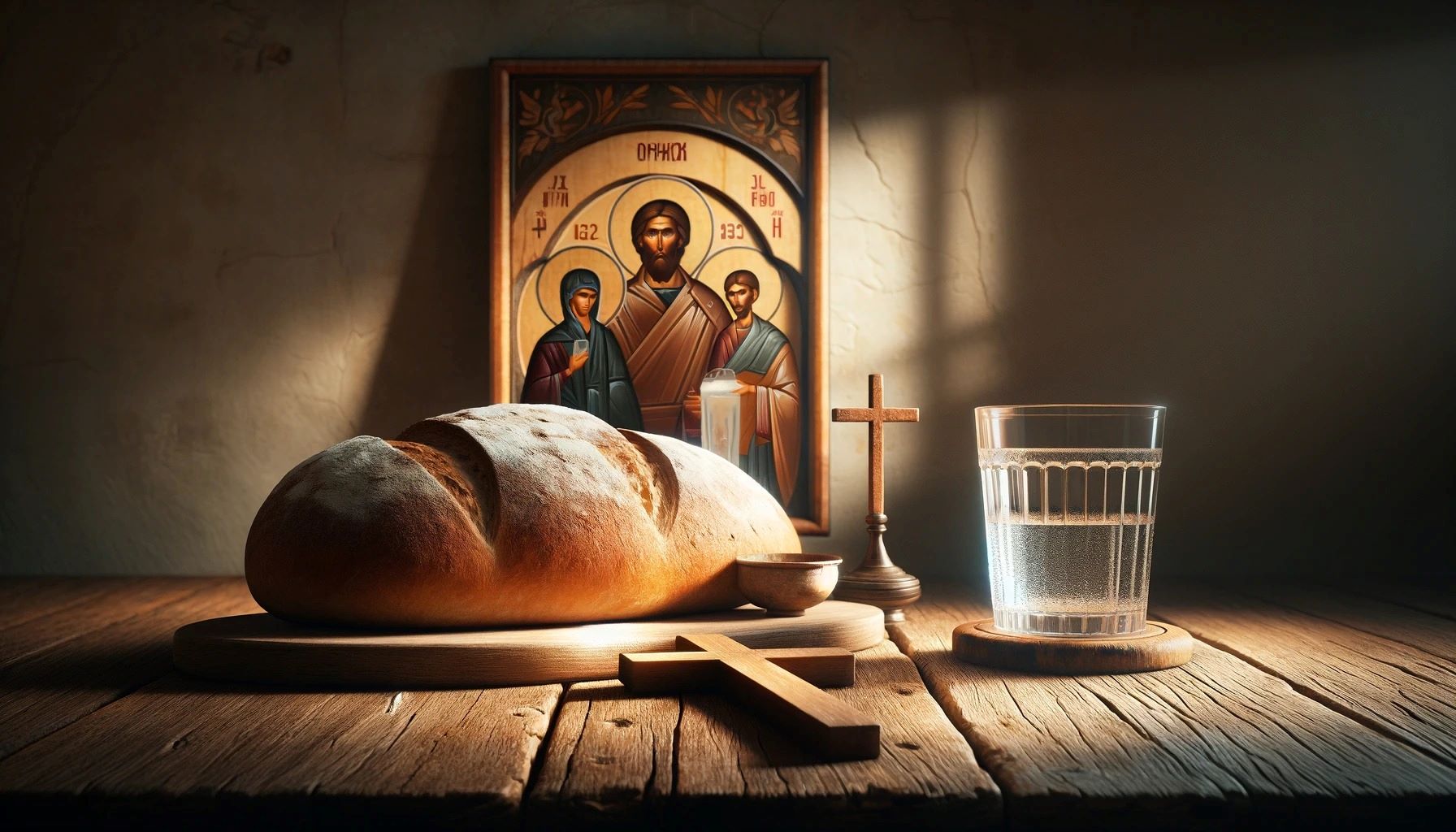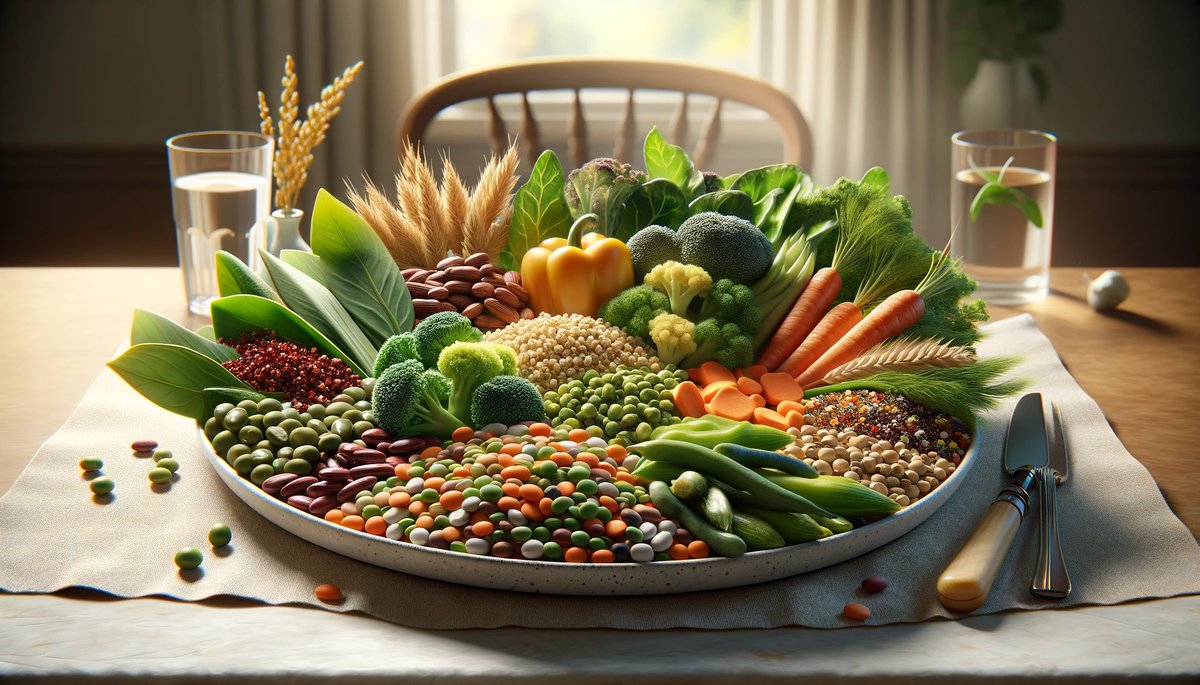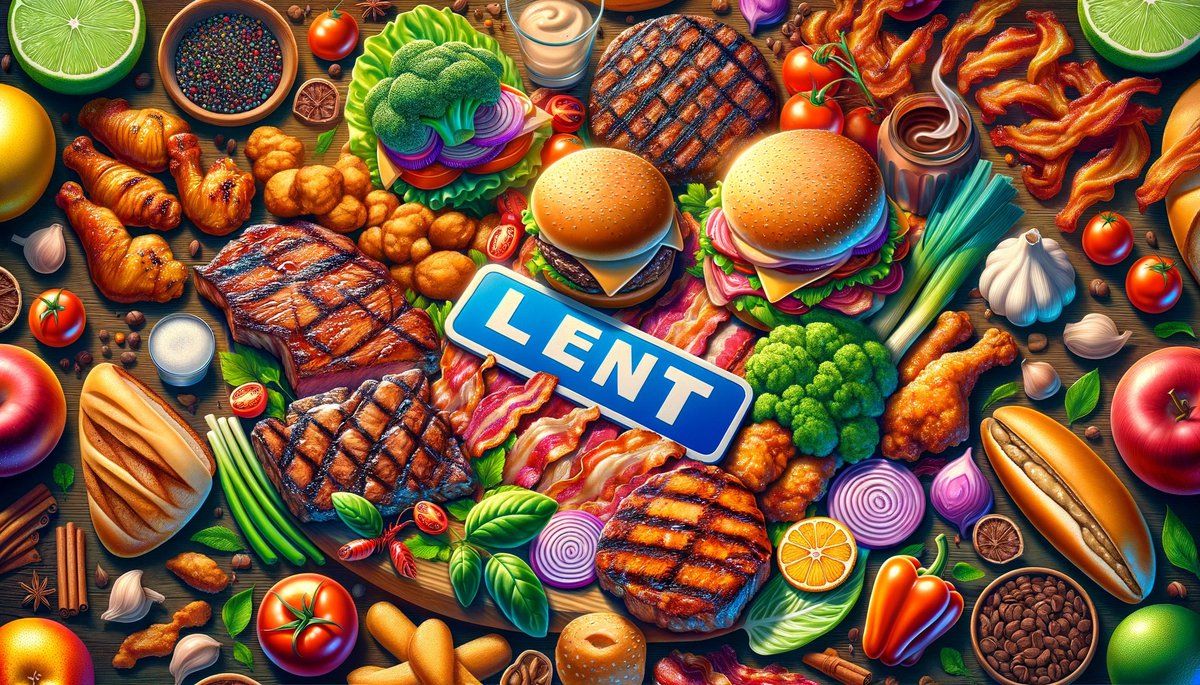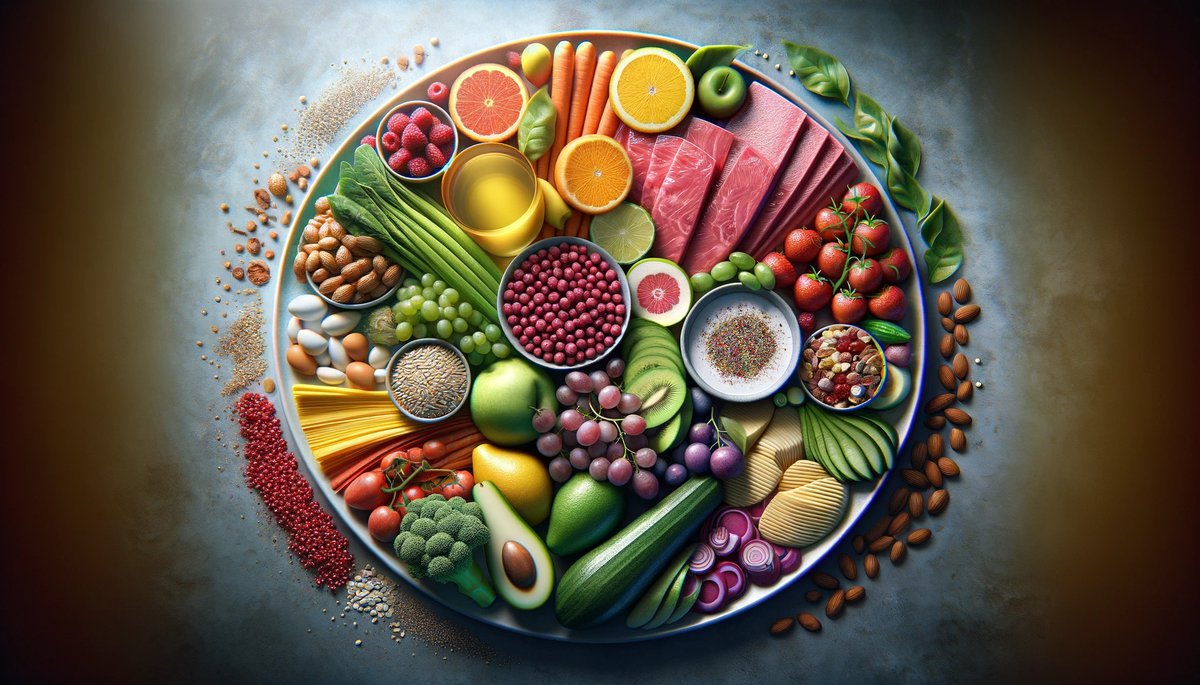Home>Special Themes>What To Eat During Lent Fasting?


Special Themes
What To Eat During Lent Fasting?
Published: February 28, 2024
Ericka Andersen, an editor at Christian.net, expertly merges digital strategy with content creation, focusing on faith and societal issues. Her communication skills enhance the platform's engaging narratives, fostering meaningful dialogue on belief's impact on society.
Discover delicious and nutritious meal ideas for Lent fasting with our special themes. Find satisfying recipes to support your dietary needs during this sacred time.
(Many of the links in this article redirect to a specific reviewed product. Your purchase of these products through affiliate links helps to generate commission for Christian.net, at no extra cost. Learn more)
Table of Contents
Introduction
What To Eat During Lent Fasting?
Lent is a significant period of fasting and abstinence observed by many Christian denominations. It is a time of spiritual reflection, self-discipline, and repentance leading up to Easter. During this period, adherents often abstain from certain foods as a form of penance and to honor the sacrifices of Jesus Christ. In this article, we will explore the traditional fasting practices of Lent and provide guidance on what to eat during this solemn period.
Read more: What Are The Rules Of Fasting During Lent
Traditional Lenten Fasting Practices
Lenten fasting practices have been observed for centuries and are deeply rooted in Christian tradition. The fasting period typically lasts for 40 days, symbolizing the time Jesus spent fasting in the wilderness. During this time, adherents are encouraged to practice self-discipline, moderation, and spiritual reflection. Fasting during Lent often involves abstaining from certain foods, particularly meat and dairy products, as a way to honor the sacrifices of Jesus Christ. The goal of these practices is to focus on prayer, repentance, and almsgiving while demonstrating solidarity with the less fortunate.
The Lenten fasting period begins on Ash Wednesday and concludes on Holy Saturday, the day before Easter Sunday. Ash Wednesday and Good Friday are particularly strict fasting days, during which adherents are encouraged to consume only one full meal and two smaller meals that, when combined, do not equal a full meal. Additionally, fasting from meat is traditionally observed on Ash Wednesday and all Fridays during Lent, symbolizing the sacrifice of Jesus on Good Friday.
In addition to dietary restrictions, Lenten fasting practices may also include abstaining from certain activities or indulgences, such as entertainment, to focus on spiritual growth and self-discipline. The Lenten season is a time for believers to engage in acts of charity, prayer, and self-examination, with fasting serving as a physical and spiritual discipline to aid in this process.
Overall, traditional Lenten fasting practices are designed to encourage believers to embrace simplicity, self-denial, and a deeper connection with their faith. These practices are intended to foster a sense of solidarity with the suffering of Christ and to cultivate a spirit of humility and repentance.
Now, let's delve into the specific foods that are typically avoided and permitted during the Lenten fasting period.
Foods to Avoid During Lent
During Lent, adherents are encouraged to abstain from certain foods as a form of penance and self-discipline. The following foods are traditionally avoided during the Lenten fasting period:
1. Meat
The consumption of meat, with the exception of fish on certain days, is typically prohibited during Lent. This practice stems from the tradition of abstaining from the flesh of warm-blooded animals as a symbol of sacrifice and penitence.
2. Dairy Products
Dairy products, including milk, cheese, butter, and other animal-derived products, are often restricted during Lent. This restriction is in line with the practice of abstaining from rich and indulgent foods as a means of spiritual discipline.
Read more: Why Fast During Lent
3. Eggs
In some traditions, the consumption of eggs is also restricted during Lent. Eggs, symbolizing new life and rebirth, are often considered too rich and indulgent for the period of fasting and abstinence.
4. Rich and Indulgent Foods
In addition to specific food categories, Lenten fasting often involves avoiding rich and indulgent foods such as desserts, pastries, and other high-calorie treats. This practice emphasizes simplicity and self-denial during the Lenten season.
5. Alcoholic Beverages
Many adherents also choose to abstain from alcoholic beverages during Lent as a form of self-discipline and spiritual reflection.
By avoiding these foods, believers aim to embrace a simpler and more humble diet, reflecting the spirit of self-denial and penance that characterizes the Lenten season. These dietary restrictions are intended to redirect focus towards spiritual growth, prayer, and acts of charity, while also fostering a sense of solidarity with the suffering of Christ.
Foods Permitted During Lent
While there are specific foods to avoid during Lent, there are also a variety of nutritious and wholesome options that are permitted and even encouraged during the fasting period. These foods provide essential nutrients and sustenance while aligning with the spirit of simplicity and self-discipline that characterizes Lenten fasting. Here are some foods that are typically permitted during Lent:
-
Fish and Seafood: Unlike meat, fish and seafood are often permitted during Lent, particularly on Fridays. This tradition stems from the historical association of fish with fasting and abstinence, as well as the symbolism of fish in Christian tradition. Fish provides a source of protein and essential nutrients while adhering to the dietary restrictions of Lent.
-
Vegetables and Fruits: Fresh fruits and vegetables are excellent choices for Lenten meals. They are rich in vitamins, minerals, and fiber, providing essential nutrients to support overall health during the fasting period. Incorporating a variety of colorful fruits and vegetables into meals can add flavor and nutritional diversity to the diet.
-
Legumes and Grains: Legumes such as beans, lentils, and chickpeas, as well as whole grains like quinoa, brown rice, and oats, are valuable sources of plant-based protein, fiber, and complex carbohydrates. These foods can be used to create hearty and nourishing dishes that contribute to a balanced Lenten diet.
-
Nuts and Seeds: Nuts and seeds offer a satisfying crunch and are packed with essential nutrients, including healthy fats, protein, and micronutrients. They can be enjoyed as snacks or incorporated into salads, stir-fries, and other dishes to add texture and flavor.
-
Dairy Alternatives: For those who abstain from dairy products during Lent, there are a variety of plant-based alternatives available, including almond milk, coconut milk, and soy-based products. These alternatives can be used in cooking and baking to create dairy-free versions of favorite dishes.
-
Simple and Unprocessed Foods: Lent is a time to embrace simplicity and mindfulness in eating. Choosing unprocessed and minimally refined foods, such as whole grains, fresh produce, and natural sweeteners, can help maintain a balanced and nourishing diet while honoring the principles of Lenten fasting.
By incorporating these permitted foods into meals, believers can create a diverse and satisfying menu that aligns with the spiritual and dietary guidelines of the Lenten season. These foods not only provide essential nutrition but also support the overarching goals of self-discipline, reflection, and spiritual growth during this solemn period.
Read more: What Religions Fast During Lent
Nutritious Options for Lenten Meals
During the Lenten fasting period, it is essential to prioritize nutritious and wholesome options to support overall health and well-being. By incorporating a variety of nutrient-dense foods into meals, believers can maintain a balanced diet while observing the spiritual and dietary guidelines of Lent. Here are some nutritious options for Lenten meals that provide essential nutrients and sustenance:
-
Grilled or Baked Fish: Fish, particularly varieties rich in omega-3 fatty acids such as salmon, mackerel, and sardines, are excellent choices for Lenten meals. Grilling or baking fish with a variety of herbs and spices can create flavorful and satisfying dishes that are rich in protein and essential nutrients.
-
Vegetable Stir-Fry: A colorful and vibrant vegetable stir-fry can be a nutritious and satisfying option for Lenten meals. Combining an assortment of fresh vegetables such as bell peppers, broccoli, carrots, and snap peas with a savory stir-fry sauce provides a delicious and nutrient-packed dish.
-
Lentil Soup: Lentils are a valuable source of plant-based protein, fiber, and essential minerals. A hearty lentil soup, flavored with aromatic herbs and vegetables, can be a nourishing and comforting choice for Lenten meals, providing warmth and sustenance during the fasting period.
-
Quinoa Salad: Quinoa, a versatile whole grain, can serve as the foundation for a nutritious and filling salad. Combining cooked quinoa with an array of fresh vegetables, herbs, and a zesty vinaigrette creates a vibrant and satisfying dish that is rich in protein, fiber, and essential nutrients.
-
Bean and Vegetable Tacos: Incorporating a variety of beans, such as black beans or pinto beans, into vegetarian tacos along with an assortment of colorful vegetables and flavorful seasonings offers a nutritious and flavorful option for Lenten meals. Topped with fresh salsa and avocado, these tacos provide a satisfying and wholesome dining experience.
-
Fruit and Nut Parfait: A fruit and nut parfait made with layers of fresh fruit, Greek yogurt or dairy-free alternatives, and a sprinkle of nuts and seeds offers a nutritious and refreshing option for Lenten meals. This delightful parfait provides a balance of sweetness, creaminess, and crunch while delivering essential nutrients.
By embracing these nutritious options for Lenten meals, believers can create a diverse and satisfying menu that aligns with the spiritual and dietary principles of the Lenten season. These meals not only provide essential nutrition but also support the overarching goals of self-discipline, reflection, and spiritual growth during this solemn period.
Meal Planning Tips for Lent
Meal planning during Lent involves thoughtful consideration of dietary restrictions, nutritional balance, and the spiritual significance of the fasting period. Here are some practical tips for planning and preparing meals that align with the traditions and principles of Lent:
-
Explore Meatless Recipes: Embrace the diversity of meatless recipes from various culinary traditions around the world. Explore plant-based cuisines such as Mediterranean, Indian, and Asian dishes to discover flavorful and satisfying options that do not rely on meat or animal products.
-
Incorporate Abundant Vegetables: Build meals around an abundance of colorful and nutrient-rich vegetables. Incorporating a variety of vegetables not only adds vibrant flavors and textures to dishes but also ensures a diverse intake of essential vitamins, minerals, and dietary fiber.
-
Experiment with Seafood: Explore a variety of seafood options to diversify Lenten meals. Incorporate different types of fish, shellfish, and seafood into recipes to provide essential omega-3 fatty acids and high-quality protein while adhering to the Lenten dietary guidelines.
-
Plan Balanced Meals: Ensure that Lenten meals are balanced and satisfying by including a combination of protein sources, whole grains, legumes, and ample servings of vegetables. Balanced meals help maintain energy levels and provide essential nutrients throughout the fasting period.
-
Prepare Simple and Nourishing Soups: Soups made with vegetables, legumes, and whole grains can be nourishing and comforting options for Lenten meals. Experiment with different soup recipes to create hearty and wholesome dishes that provide warmth and sustenance.
-
Utilize Plant-Based Protein Sources: Explore the versatility of plant-based protein sources such as tofu, tempeh, lentils, and beans. These ingredients can serve as the foundation for flavorful and satisfying dishes that contribute to a balanced Lenten diet.
-
Embrace Whole Grains: Incorporate a variety of whole grains such as quinoa, brown rice, barley, and farro into Lenten meals. Whole grains provide essential nutrients and dietary fiber, contributing to a sense of fullness and supporting overall health during the fasting period.
-
Plan Ahead for Fasting Days: On fasting days, plan meals that are simple, modest, and in accordance with the traditional fasting guidelines. Consider incorporating lighter fare such as vegetable-based dishes, simple grains, and small servings of fruits and nuts.
-
Mindful Eating Practices: Embrace mindful eating practices during Lent, focusing on gratitude, moderation, and the spiritual significance of meals. Take time to savor and appreciate each meal, reflecting on the deeper meaning of the Lenten season.
-
Explore Global Lenten Traditions: Learn about the diverse culinary traditions associated with Lent from around the world. Explore the unique fasting practices and traditional dishes of different cultures, gaining inspiration for creating varied and culturally rich Lenten meals.
By incorporating these meal planning tips, believers can navigate the Lenten fasting period with a sense of creativity, mindfulness, and nutritional balance, honoring the spiritual significance of the season while embracing a diverse and nourishing culinary experience.
Conclusion
In conclusion, the Lenten fasting period holds deep spiritual significance for many Christians, serving as a time of self-discipline, reflection, and solidarity with the sacrifices of Jesus Christ. The traditional fasting practices of Lent, including abstaining from meat, dairy products, and indulgent foods, are rooted in centuries-old traditions aimed at fostering spiritual growth and humility. While observing these dietary restrictions, believers have a wide array of nutritious options available, including fish, seafood, vegetables, legumes, and whole grains, to create diverse and satisfying meals that align with the principles of Lenten fasting.
Meal planning during Lent involves thoughtful consideration of dietary restrictions, nutritional balance, and the spiritual significance of the fasting period. By incorporating meatless recipes, abundant vegetables, seafood options, balanced meals, and mindful eating practices, believers can navigate the Lenten fasting period with a sense of creativity, mindfulness, and nutritional balance, honoring the spiritual significance of the season while embracing a diverse and nourishing culinary experience.
As believers engage in acts of charity, prayer, and self-examination during Lent, the dietary practices of fasting serve as a physical and spiritual discipline, guiding individuals toward a deeper connection with their faith. The Lenten season provides an opportunity for believers to embrace simplicity, self-denial, and a focus on spiritual growth, ultimately leading to a renewed sense of purpose and devotion as Easter approaches.













